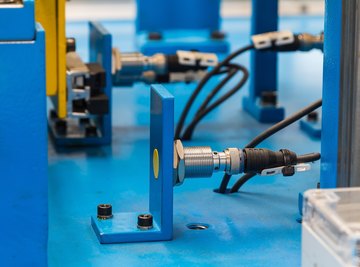
A momentary action switch is a classification in electronics. It describes an electronic switch's contact type, or how a device is instructed to produce an electric charge. Momentary action switches, as the name suggests, are temporarily activated by applied force and returned to normal when the force is removed.
Function of Switches
Switches are electrical components designed to unite or break an electrical circuit for the purpose of disrupting a current or diverting it to another conductor. They typically have one or more pairs of contacts that can be either closed (the internal wires are connected, allowing an electric flow) or open (the wires are separated, nonconducting an electric flow) contacts.
Function of Momentary Action Switches
Momentary action switches turn a process on and off when force is applied and then removed. The applied force makes the circuit closed and the removed force returns them to being open, in its usual position. Commonly found examples are doorbells, car horns and laser pointers.
Features
The trigger for momentary action switches is usually a button but the method of operation could be a key, slide or toggle. Switches can be designed to indicate this momentary action by a light or sound.
References
Resources
About the Author
Mateo Zeske has written professionally for over five years, including articles for "High School Sports," the industrial "How to Get Started with a Talent Agency" and community-oriented e-zines. As a filmmaker Zeske worked with production companies Hit It and Quit It, Road Dog Productions and masterminded the series "Bastardized Product." He holds a Master of Journalism from the University of North Texas.
